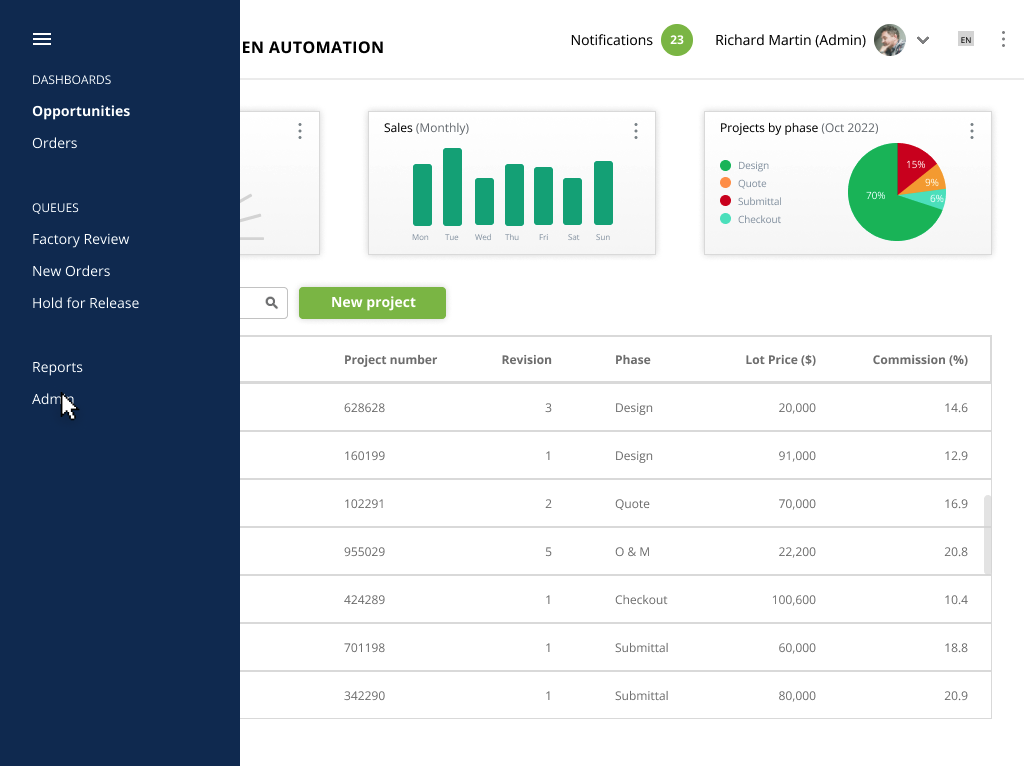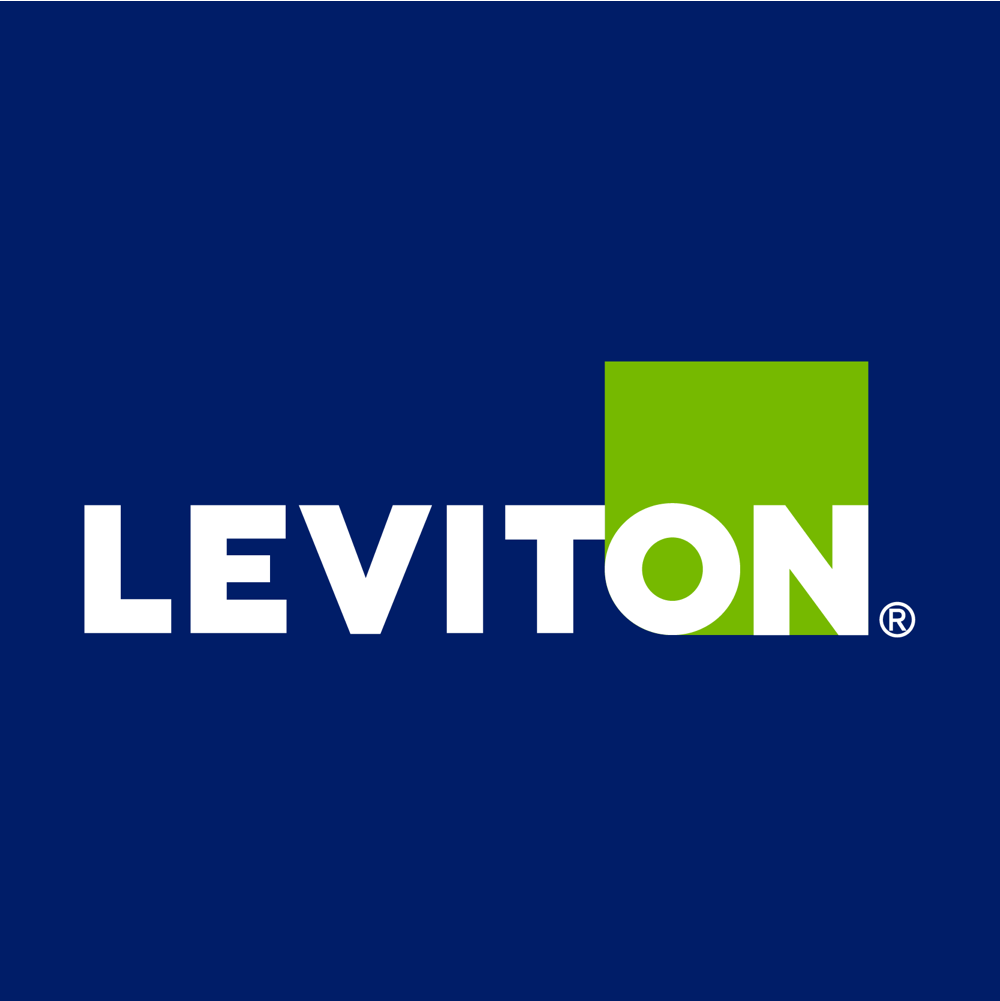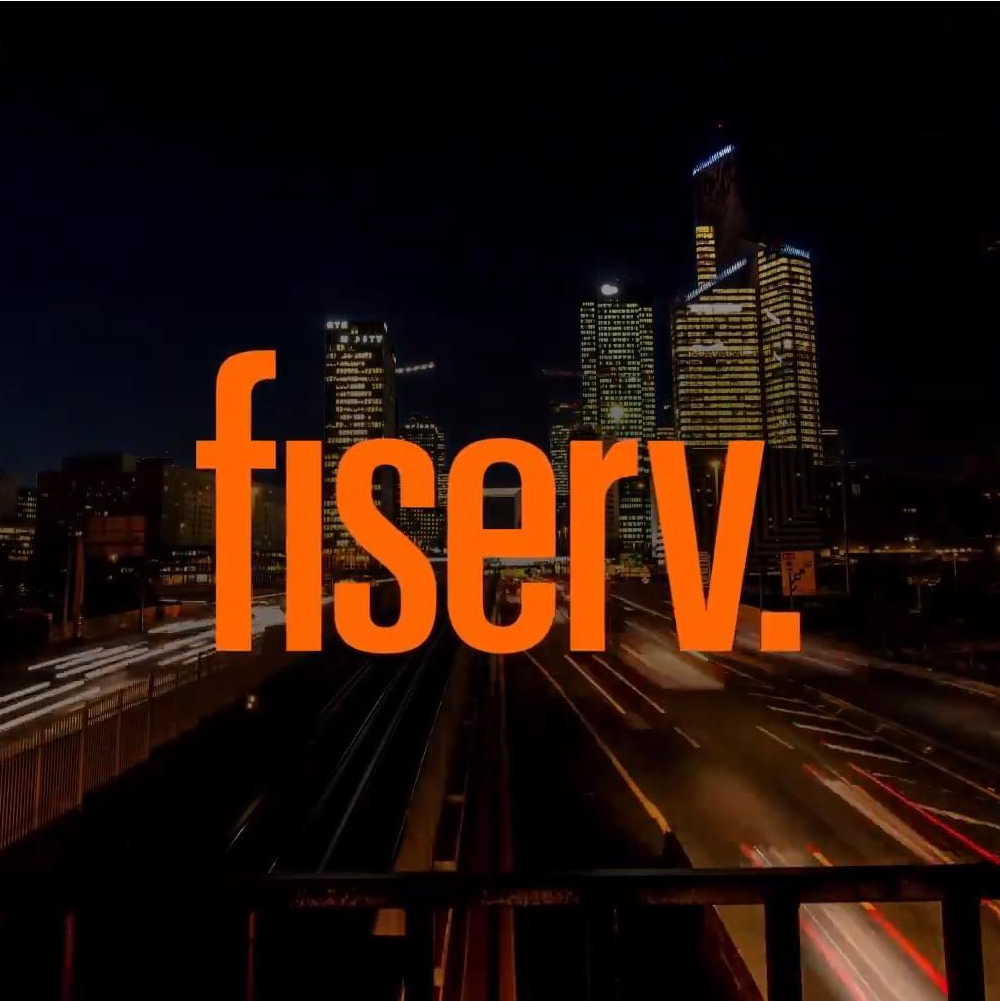Leviton
1 application to replace 5Background
Leviton is a leader in lighting control and sensors. Based in Tualatin, Oregon, their main source of revenue is lighting package sales for building projects such as hospitals, schools, and performance arts centers.
Leviton envisioned a web application that could support every aspect of the sales process across several teams, including project management, quoting, billing, CAD design, communication, shipping, and deployment.
Business Requirements
The objective was to develop a unified software solution that would:
- Reduce friction, confusion, and wasted time caused by a sales process that relied on multiple teams using multiple applications that have too many features
- Act as the single source of communication between teams
- Learn over time and eventually do the "heavy lifting" — 80% of the routine tasks — and leave Leviton's seasoned in-house designers to handle exceptions and edge cases
The main applications to be replaced were:
- Bluebeam, a custom application built from AutoCad
- Salesforce
- Outlook
- Calls and texts
- Windows folders
Constraints
The project suffered from a miscommunication during of the requirements gathering process. The ambitious scope of integrating advanced technologies into a single platform was greater than both the Infosys team and the Leviton realized.
The consequence was that the Infosys development team only captured a portion of the client's complete vision of their dream application.
Staffing and timeline was also a concern. The scope of the project this size typically requires an entire development organization and design working full-time for years.
Approach
I worked hand-in-hand with Leviton’s IT manger to revisit the requirements, leading to the development of a platform that could be easily expanded and adapted by the IT team.
I interviewed all of the team managers to get a high-level overview of what they do and how it fits into the larger process (e.g what a win is for them, what should be automated vs. what's done with a handshake).
Challenges and Solutions
The project suffered from several challenges:
- Abrupt requirements gathering: the requirements gathering and discovery process did not fully capture the scope of the client's vision: the ambitious venture of integrating advanced technologies (such as AI) into a single platform was greater than both the Infosys team and the Leviton realized
- Innovation tension: balancing the desire to literally borrow elements from the source application and the desire to building something bespoke that made those applications irrelevant
- Staffing mismatches: the development operated without a business analyst until the project was underway
- Staffing mismatches during requirements gathering - IT manager who was already managing design and development of applications for Leviton, was not a fixture during initial meetings
- the AI team ran into technological issues, which impacted timeline
The result was that: there wasn't enough information gathered in discovery to create backlogs of user stories and to do detailed design Suffered from lack of project management; no scrum; no agile
Specifically I created:
- Weekly white-boarding sessions in the Leviton office with key stakeholders
- Tightened the design/review loop by coming into the office for regular over the should sessions.
- I switched from Sketch to Figma so I could hand off design to the offshore team in India and discuss
- Set the IT manager up in Figma and regularly chatted inside Figma
- IT manager took point so I could focus on design exploration
Outcome
The resulting software was warmly received across Leviton, enhancing team efficiency and project execution. Though hard metrics were not available, the positive feedback from various stakeholders underscored the project's success in meeting its goals.
A map I created during design discovery to clarify the most important actors and how they move a project toward sales and implementation.
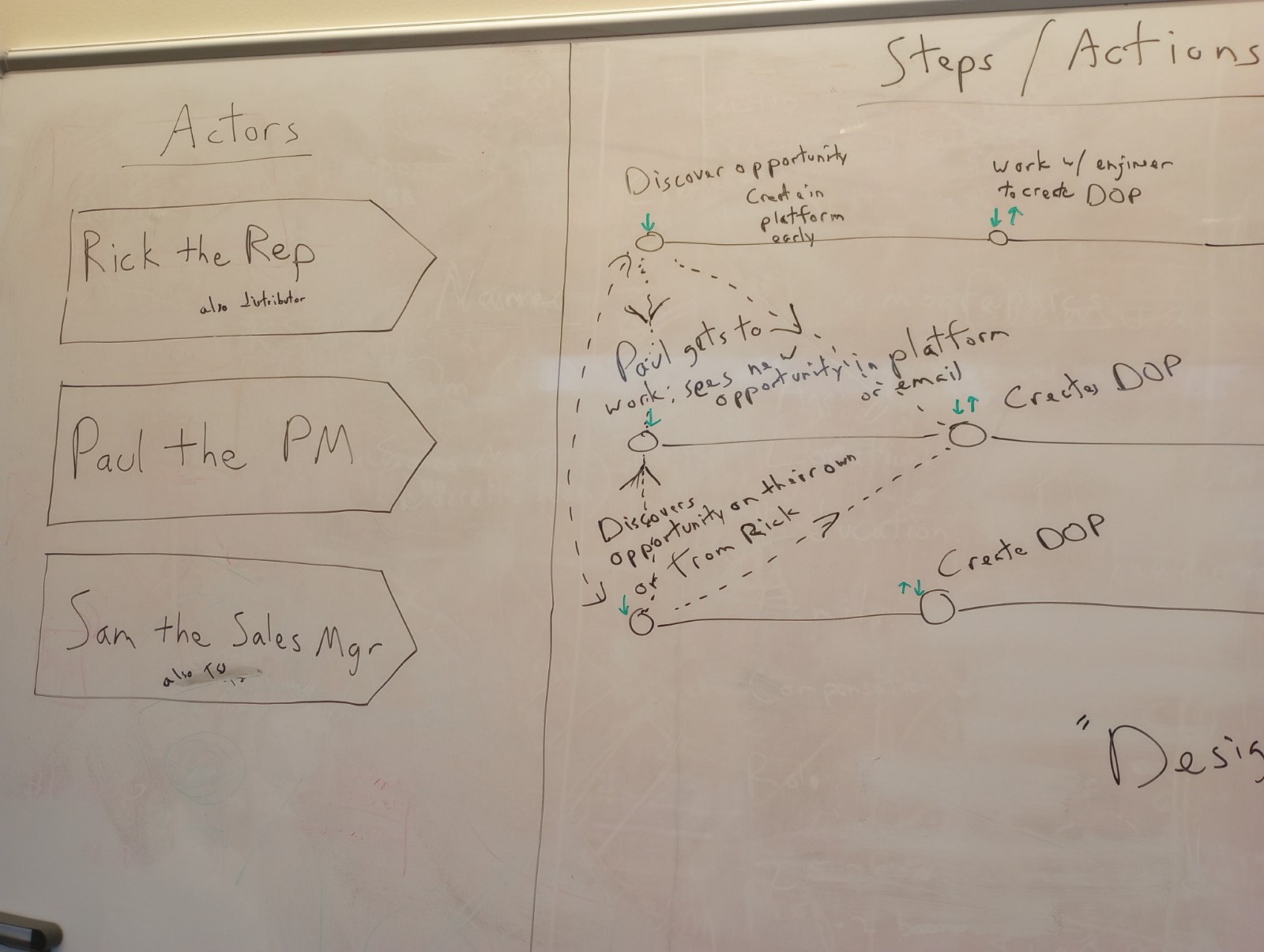
Early concept sketches where I experimented with combining elements from well-loved apps like Trello and other versatile apps. Duct-tape solutions
How would we do this if we had to ship it today?
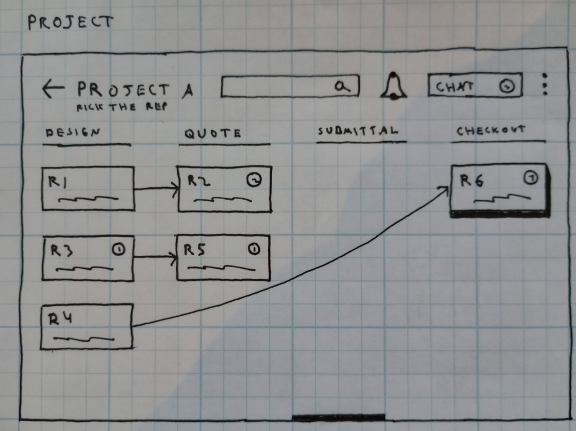
High-fidelity layouts and documents I created during the requirements gathering meetings to elicit specific details from the stakeholders.
Does this work? Why not? Show me where I'm wrong.

Personas I created during the requirements gathering meetings to understand the goals and frustrations of key roles.
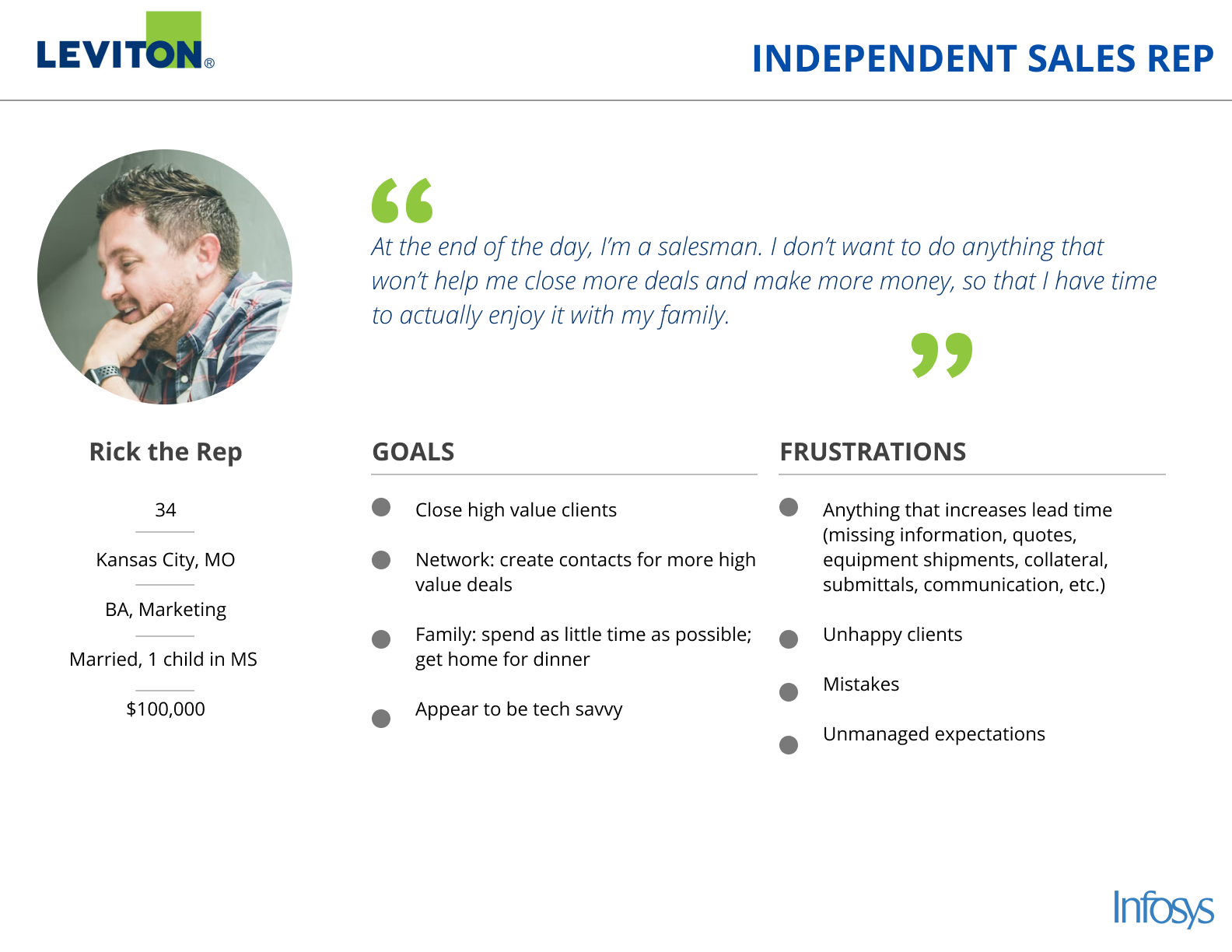
Selection of high fidelity mockups that were delivered to the Leviton IT team. Created with Figma.
